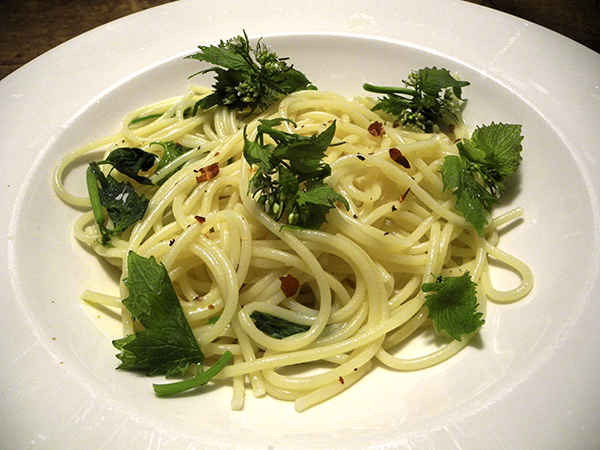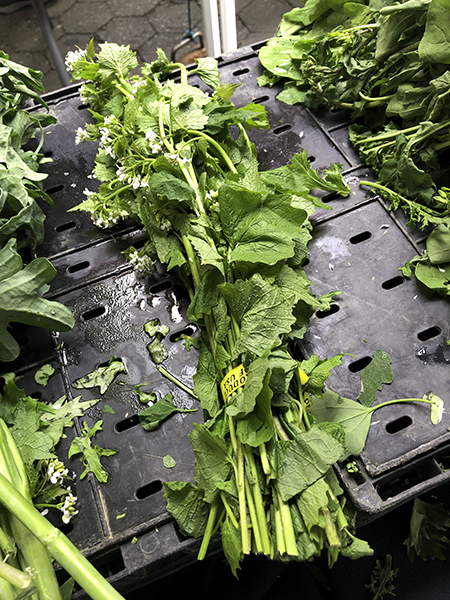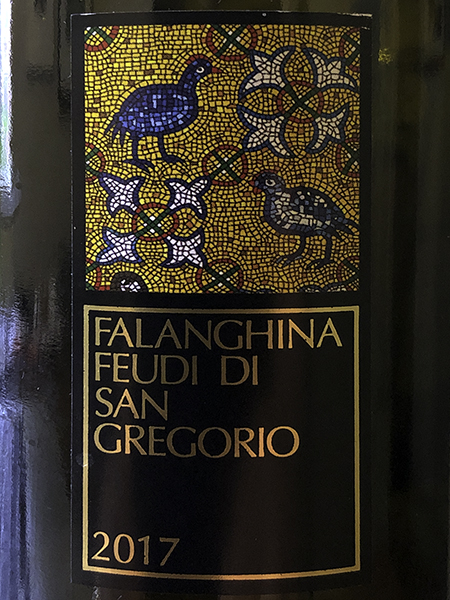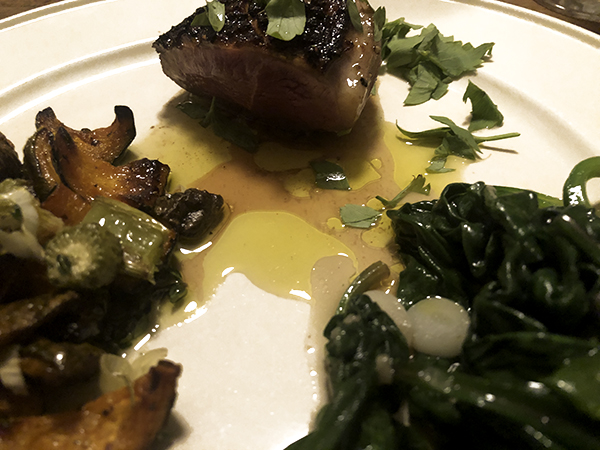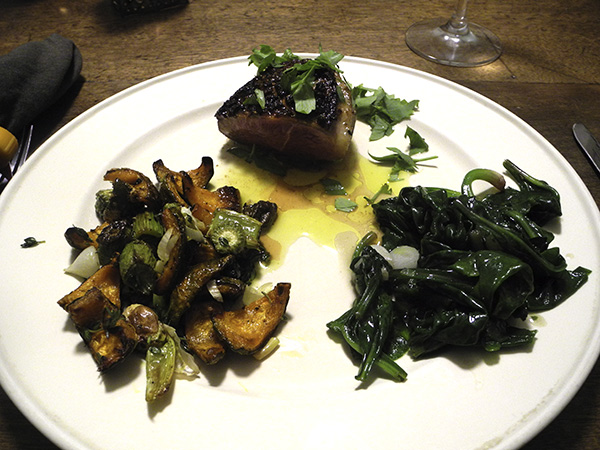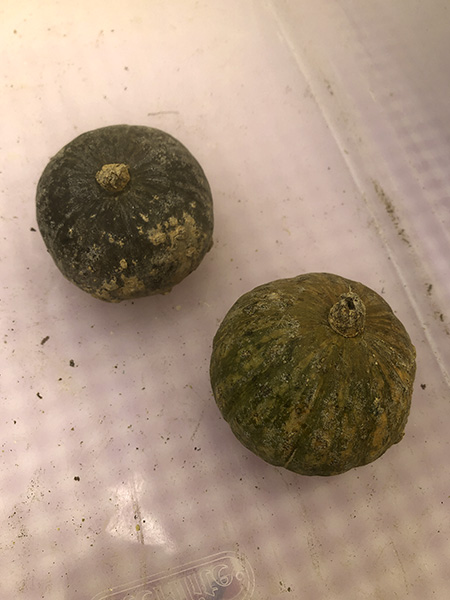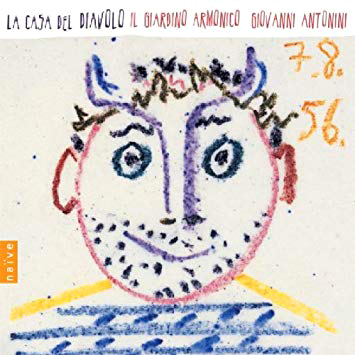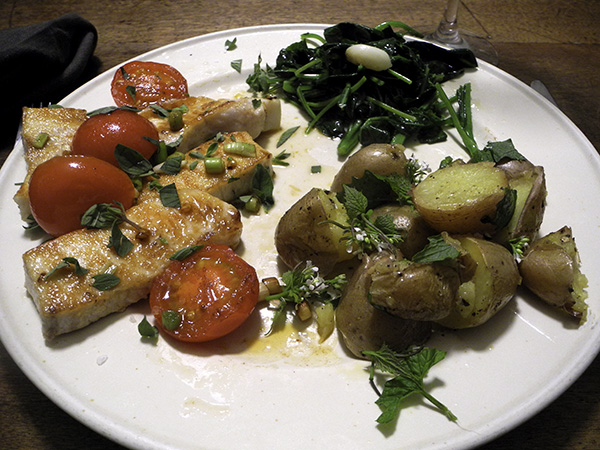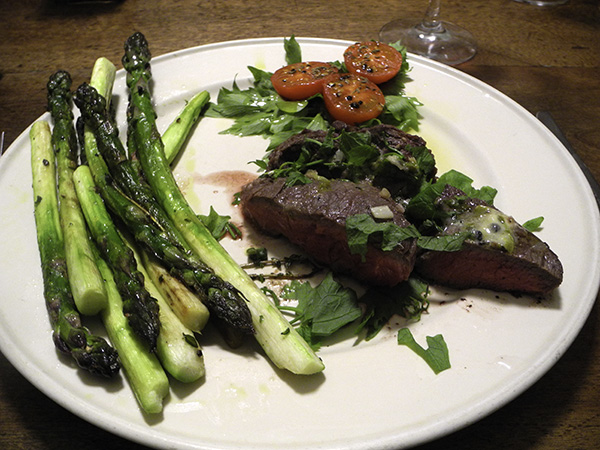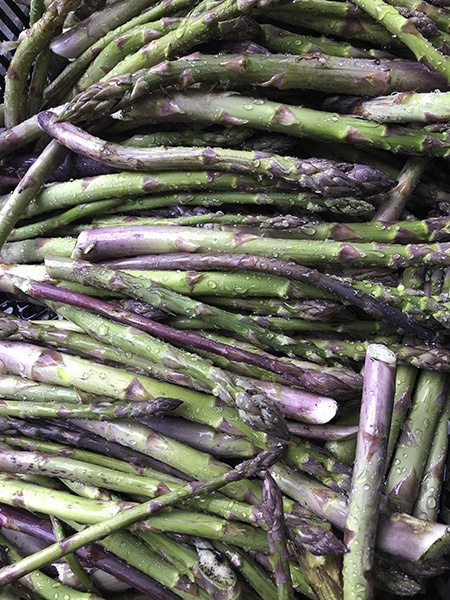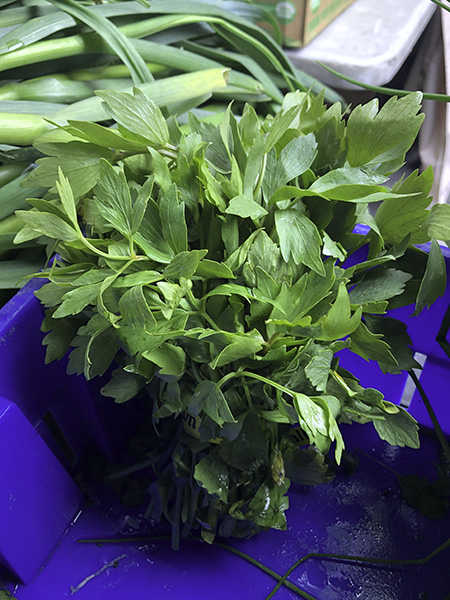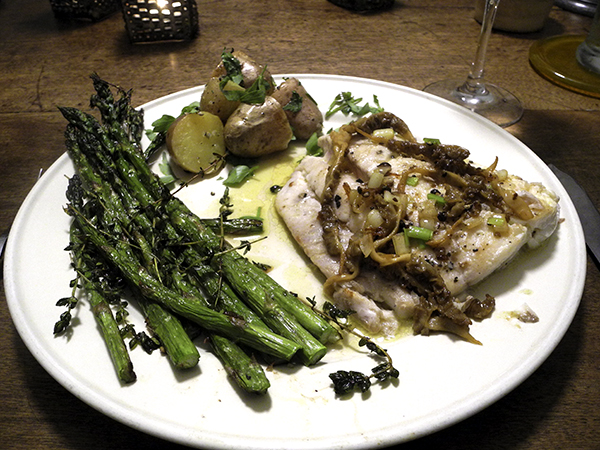
I’m new to cooking with morels (who isn’t, other than the lucky few who can hunt them in nearby fields?); I think I still have work to do on these prized and very expensive fungi, assuming I save up enough for another go: Maybe I’m too allied to Mediterranean cookery, but while this approach with a flounder fillet that I employed last night was delicious, it didn’t seem like an ideal match.
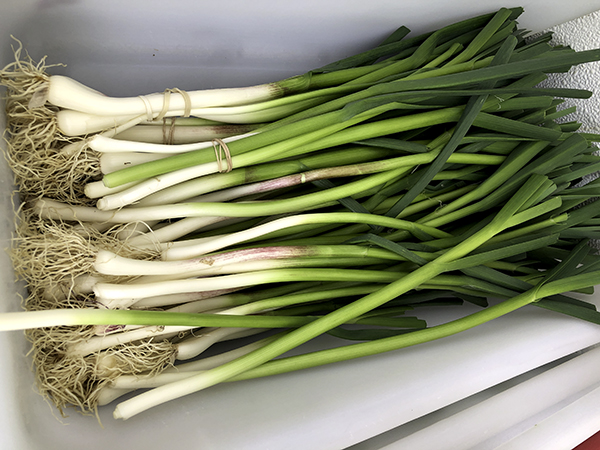
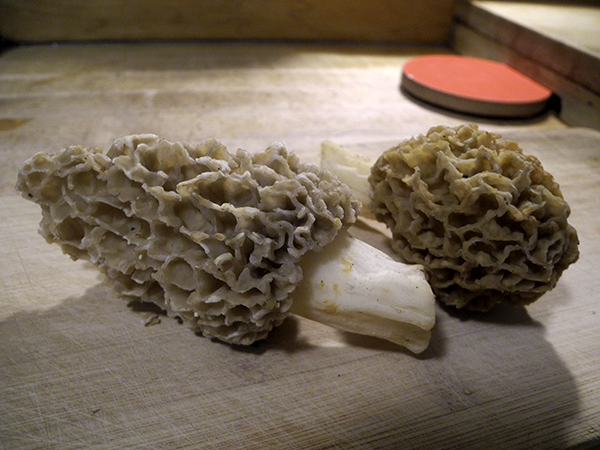
It had started at this pretty spectacular table of foraged mushrooms and ramps, or wild spring leeks, at the Union Square Greenmarket(note: the beautiful eggs weren’t foraged).
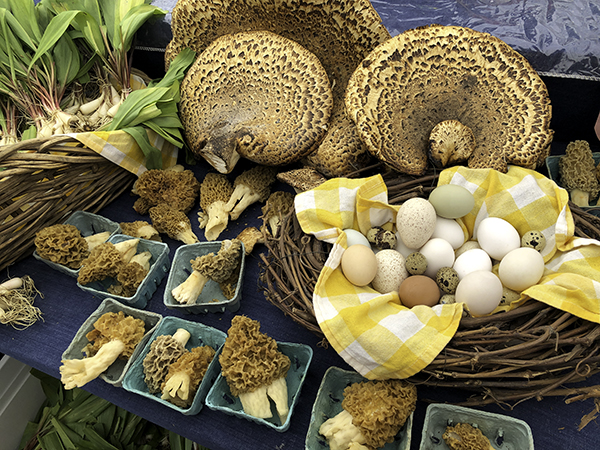
- two and a quarter ounces of perfectly clean[ed] fresh morel mushrooms (two mushrooms) from the spring foraged plants table overseen by Patrick, I think, at the Violet Hill Farm stand in the Union Square Greenmarket, sliced narrowly lengthwise (this cut may not have been a wise choice for these fungi, at least aesthetically) and added to a heavy antique copper skillet in which one spring garlic stem (the white section, and a little of the green) had first been softened in a tablespoon or so of butter, the morels immediately salted, to encourage moisture escaping, gently sautéed for several minutes until brown, a splash of Lustau dry (fino) sherry from Philippe Wines stirred in, the mushrooms seasoned with freshly ground black pepper, and kept warm while the fish, which had already begun cooking, was finished
- one very fresh flounder fillet (a total of 21 ounces) from P.E & D.D. Seafood Company, halved, seasoned on both sides with sea salt and freshly-ground black pepper, sautéed fairly gently in a couple tablespoons of butter inside a large (13-inch), thick-walled antique tin-lined copper pan, flesh side first, turned after about 2 minutes, maybe slightly more, the second side cooked for about the same length of time before the fish was removed and arranged on 2 plates, either covered, to keep warm, or, if it’s convenient to do so, placed inside a barely-warm until the mushroom sauce was completed, at which time it was spooned onto the flounder
- four medium size ‘red thumb’ potatoes and 2 ‘pinto’ potatoes (the 2 kinds remaining from larger numbers, and now assembled together as a single vegetable for this meal), all from from Norwich Meadows Farm, scrubbed, boiled whole and unpeeled in heavily-salted water until barely cooked through, drained, halved, dried in the still-warm large vintage Corning Pyrex Flameware blue-glass pot in which they had cooked, a tablespoon of Organic Valley European-Style Cultured Butter added, seasoned with sea salt and freshly-ground black pepper, arranged on the plates and sprinkled with chopped lovage, also from Norwich Meadows

- ten or eleven ounces of medium thickness (they did not have to be peeled) green asparagus from Hoeffner Farms, their tougher lower ends snapped off, rolled inside a large Pampered Chef unglazed ceramic pan with a handful of thyme branches from Phillips Farm in a little more than a tablespoon of olive oil, a little salt, and black pepper, roasted at 425º for about 20 or 25 minutes, then drizzled with a bit of Whole Foods Market organic lemon after they had been arranged on the plates
- the wine was a French (Loire/Sancerre) white, Domaine Paul Cherrier Sancerre Blanc 2017 from 67 Wine
- the music was an album of orchestral music by Hans Werner Henze, the Double Concerto for Oboe, Harp and Strings, the Fantasia for Strings, and the Sonata for Strings; the performers include Ursula Holliger (Harp), Heinz Holliger (Oboe), Paul Sacher (Conductor), and the Zurich Collegium Musicum
